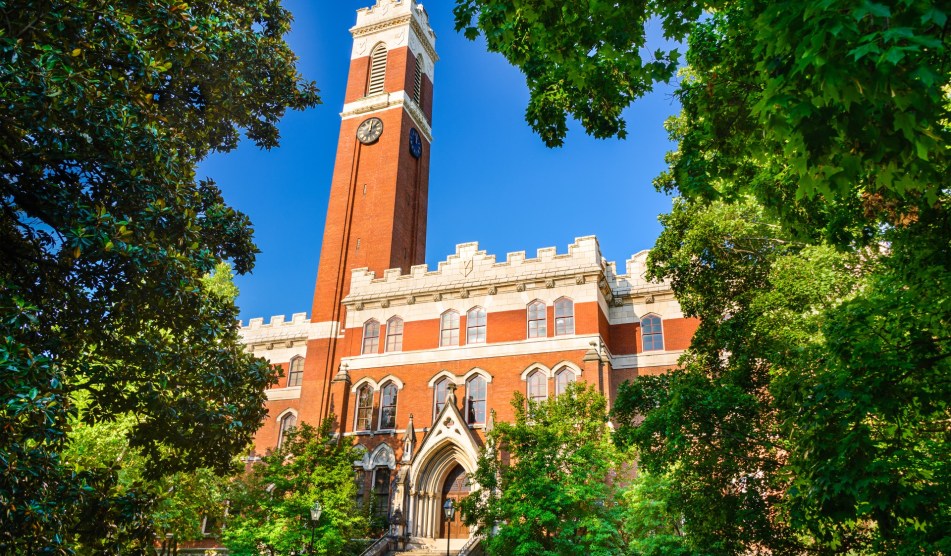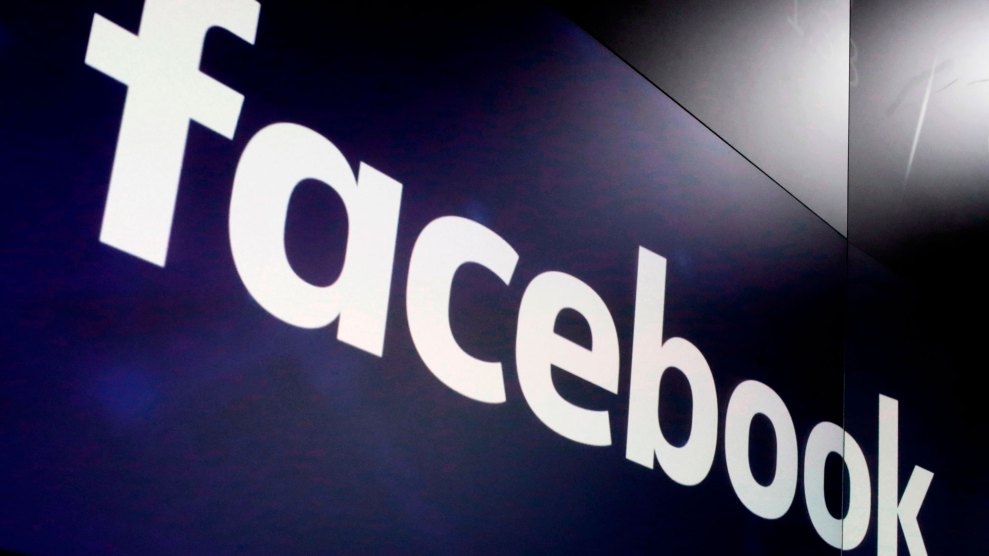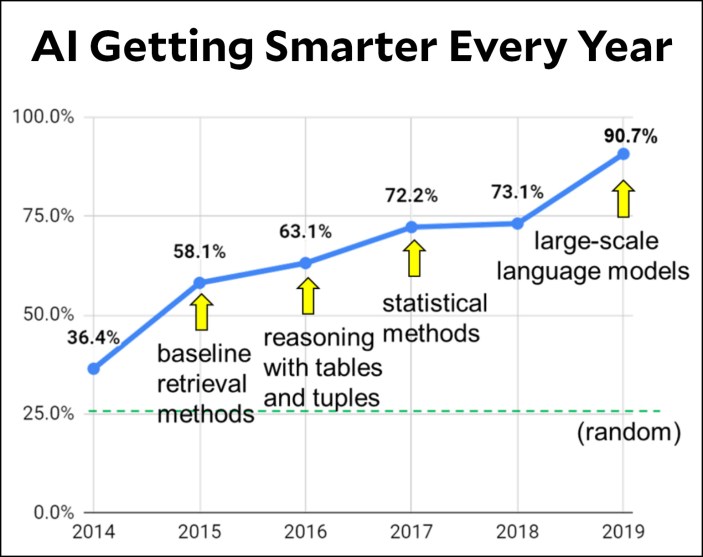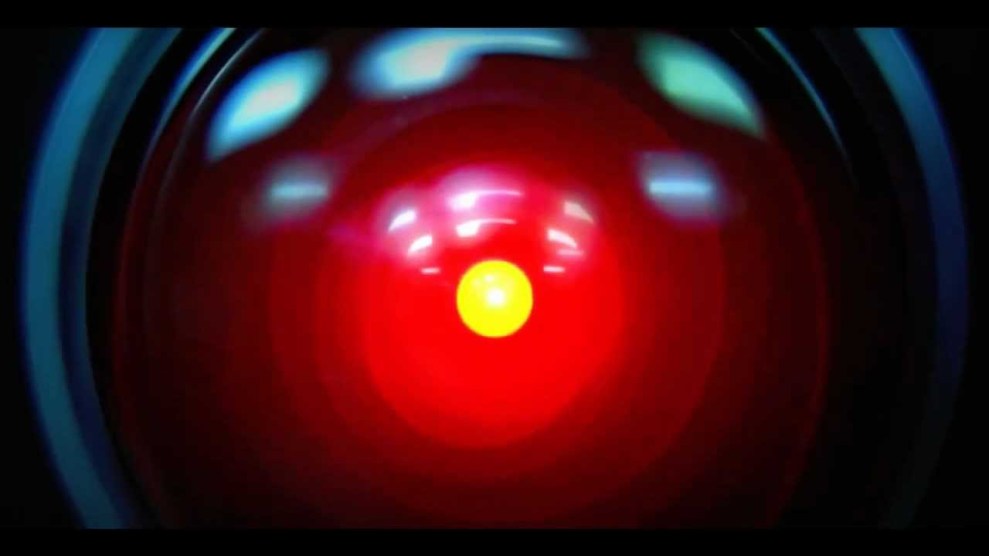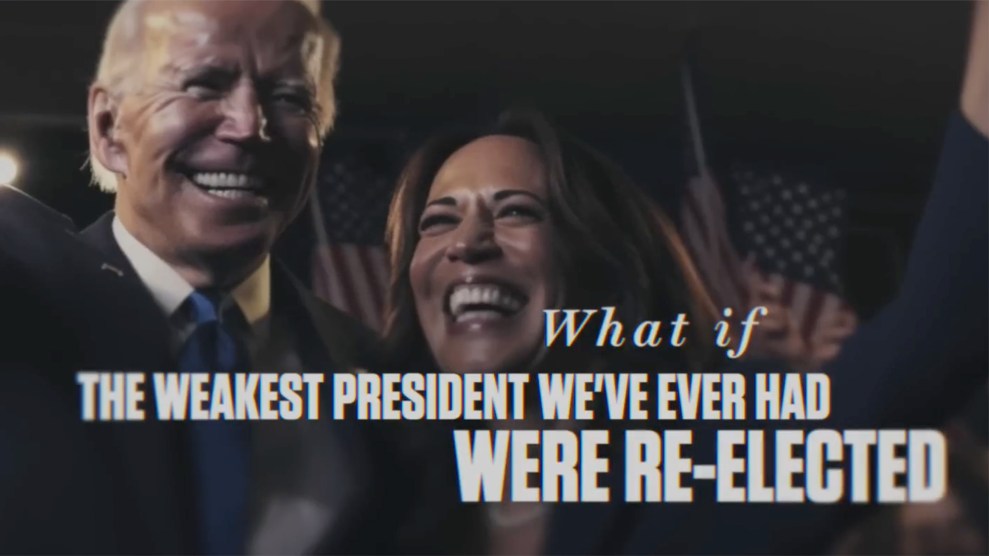
RNC/YouTube
Today President Biden announced his reelection bid. In response, the GOP announced its further descent into the uncanny valley, with a big assist from artificial intelligence.
Presumably designed as a rebuke of Biden’s own relatively somber campaign video, the Republican offering—titled “Beat Biden”—foretells the dystopian future heralded by the incumbent’s imagined second win. It’s an all-but-unlivable hellscape of war, financial ruin, and crime. And it’s all, according to the YouTube description, rendered by artificial intelligence tools. Axios reports that “this is the first time the RNC has produced a video that is 100% AI, according to a spokesperson.”
The video itself offers a clarification baked into a watermark in the top left corner: “Built entirely with AI imagery.”
So not 100 percent. There’s music, bits of voice-over, and a ton of post-production effects (jitters and other “camera” movements, vignetting, animation, color-grading, sound effects, light flares, and more) happening in this video. But nonetheless, the production does appear to rely only on startlingly good AI imagery—replacing what would normally be general stock “b-roll,” the footage typically licensed from vast libraries to fill videos (and ads, and even works of our own MoJo journalism). One such AI image generator, Midjourney, rolled out its new model (version 5) in March, and it is capable of producing astonishingly realistic images, with a few stubborn “tells”: Despite some serious improvements, human hands are still a bit weird; extra limbs appear where they shouldn’t; and most prominently, words are rendered unreadable gobbledegook. You’ll recall the rash of stories about the fake Trump arrest photographs.
The producers behind the GOP video have done a good job concealing the AI-ness of the images, by digitally degrading the pictures to make them look more like video. When Taipei is bombed 10 seconds in, lens effects have been added to make it look like the image has been ripped from a witness’ social media account. But mysteriously, the city’s famous Taipei 101 tower sticks up at a dangerously titled angle compared to the rest of the skyline. Is it meant to be an impossibly wide-angle lens? Unclear.
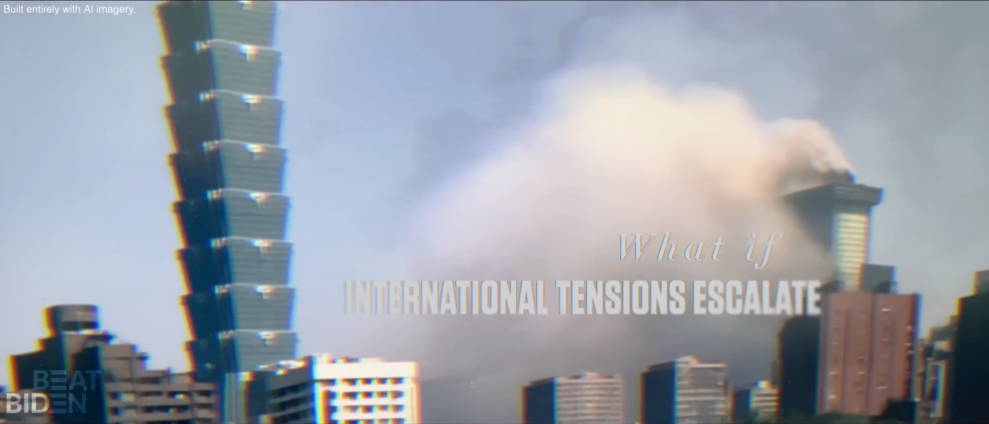
AI’s Leaning Tower of Taipei.
GOP
At 15 seconds, the AI imagines people presumably queuing to get their money out of a collapsed regional bank. Their faces are strange and potato-y. They are all white and old. The day appears to be both unusually sunny and very cold: They are bundled up, but there are simply too many people wearing sunglasses. My colleague reminds me that if you live in Denver, this is a common phenomenon. But look closer: The yellow cordon appears to pass straight through a woman’s purse.
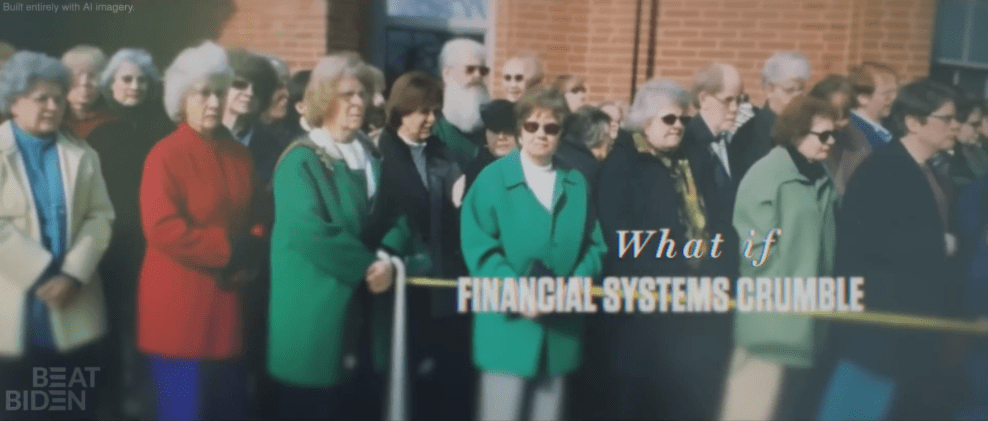
Fox News viewers queuing up to see what Tucker does next?
At 24 seconds, another classic AI tell: The words on the shop signs don’t make any sense.
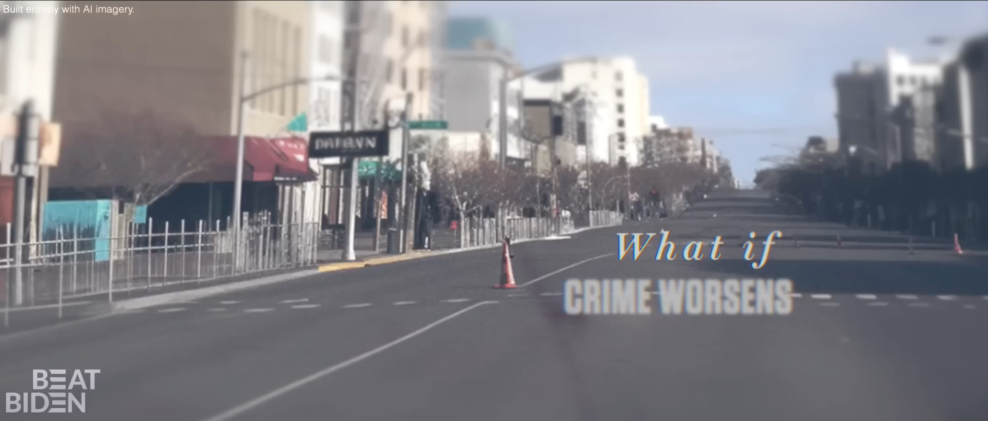
No need to get your eyes checked. AI renders words illegible.
I know I was meant to be scared when I saw the tattooed, smoking “criminal” at 26 seconds—but AI imagines this sinewing young man as very handsome and cool, despite his “MS 13” forehead ink. In my experience playing with Midjourney, this is also a common feature. It defaults to beauty norms when creating human faces.
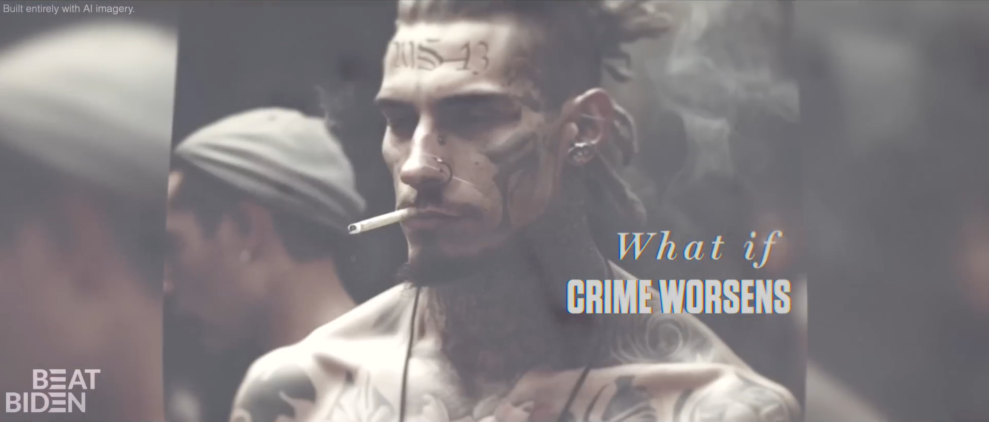
Smooth criminal
Finally, what’s meant to be the clinching image of a distressed Biden behind the Resolute Desk contains a humorous flaw: He’s not actually leaning on the desk. Biden’s elbow is finding support, somehow, mid-air. Yet another sign of his future presidential failings?
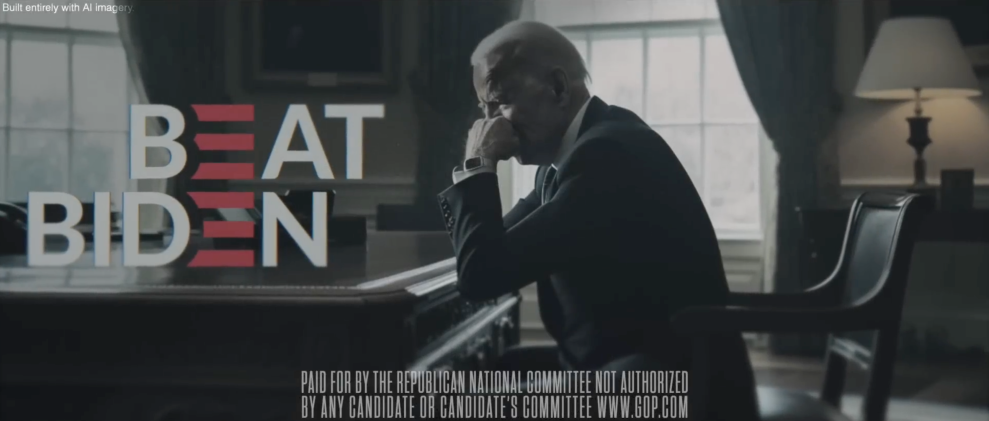
Definitely how a human sits.
I will let others muse at length about the corroding impact of AI on elections and democracy at large. But let this summary act as a simple guide for the coming deluge. Study the images more closely: The magic tricks of video editing will obscure the most commonplace AI signatures, at least for now. And videos won’t always come with watermarks declaring themselves as robot-generated.
As for the actual content of the ad, well, Republicans have never needed generative AI to help crank out human-crafted MS-13 ads, dripping in racism.


